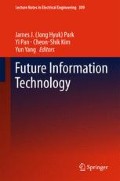Abstract
The coronary cineangiogram (CCA) is an invasive medical image modality which is used to determine the stenosis in Coronary Arteries. The motion artifacts occurring due to the heart pulse makes great disturbance to visualize a stable contrast agent flow within the vessel structure of CCA and it negatively affects to quantify the stenosis based on the functional significance within the arterial flow. This paper describes an application of template matching to reconstruct the CCA by reducing the global motion artifacts. The Normalized Correlation Coefficient (NCC) method has been used for the template matching because, it reports the lowest false matching occurrences. Further, the NCC technique has 99.5% accuracy and demonstrates its ability to maintain the visual correlation of the internal blood flow among the frames. Producing Motion eliminated CCA to maintain the visual correlation of arterial flow is an improvement of angiography technique which can be useful for advanced processing.
Access this chapter
Tax calculation will be finalised at checkout
Purchases are for personal use only
Preview
Unable to display preview. Download preview PDF.
References
Wong, J.T., Le, H., Suh, W.M., Chalyan, D.A., Mehraien, T., Kern, M.J., Kassab, G.S., Molloi, S.: Quantification of Fractional Flow Reserve based on Angiographic Image Data. Int. J. Cardiovasc Imaging 28(1), 13–22 (2012)
Tonino, P.A.L., Fearon, W.F., DeBruyne, B., Oldroyd, K.G., Leesar, M.A., Lee, P.N.V., MacCarthy, P.A., van’t Veer, M., Pijls, N.H.J.: Angiographic Versus Functional Severity of Coronary Artery Stenoses in the FAME Study Fractional Flow Reserve Versus Angiography in Multivessel Evaluation. J. Am. Coll. Cardiol. 55(25), 2816–2821 (2010)
Takagi, A., Tsurumi, Y., Magosaki, N., Suzuki, K., Nakamura, K., Kasanuki, H.: Significance of Angiographic Haziness at the Distal Stent Edge: Aanalysis by Intravascular Ultrasound and Quantitative Coronary Angiography. J. Cardiol. 33(6), 307–316 (1999)
Khan, M.A.U., Khan, R.B., Bilal, S., Jamil, A., Shah, M.A.: Enhancement of Angiogram Images Using Pseudo Color Processing. Information Technology Journal 7(1), 210–214 (2008)
Lee, T.-F., Lee, C.-Y., Chao, P.-J., Lee, C., Wang, C.-Y., Fang, C.-H.: Quantitative Coronary Analysis Medical Image Processing Improved by Combining Wavelet Edge Detection and Segmentation. In: 2009 Fourth International Conference on Innovative Computing, Information and Control (ICICIC), pp. 1196–1199 (2009)
Pijls, N.H.J., de Bruyne, B., Peels, K.: Measurement of Fractional Flow Reserve to Assess the Functional Severity of Coronary-Artery Stenoses. New England Journal of Medicine 334(26), 1703–1708 (1996)
Zheng, S., Weirong, D.: Analysis of Coronary Arterial Dynamics from X-ray Angiographic Sequences. In: Second International Symposium on Computational Intelligence and Design, Changsha, pp. 201–204 (2009)
Bradski, G., Kaehler, A.: Template Matching: Learning OpenCV: Computer Vision with the OpenCV Library. O’Reilly Media (2008)
Kirbas, C., Quek, F.K.H.: Vessel Extraction Techniques and Algorithms: A Survey. In: Third IEEE Symposium on Bioinformatics and Bioengineering, pp. 238–245 (2003)
Stansfield, S.A.: ANGY: A Rule-Based Expert System for Automatic Segmentation of Coronary Vessels from Digital Subtracted Angiograms. IEEE Transactions on Pattern Analysis and Machine Intelligence PAMI 8(2), 188–199 (1986)
Johnson, R.: Image Processing for Arterial Tree Morphology. In: Bankman, I. (ed.) Handbook of Medical Imaging, Academic Press, San Diego (2000)
Author information
Authors and Affiliations
Corresponding author
Editor information
Editors and Affiliations
Rights and permissions
Copyright information
© 2014 Springer-Verlag Berlin Heidelberg
About this paper
Cite this paper
Kulathilake, K.A.S.H., Ranathunga, L., Constantine, G.R., Abdullah, N.A. (2014). Reduction of Motion Disturbances in Coronary Cineangiograms through Template Matching. In: Park, J., Pan, Y., Kim, CS., Yang, Y. (eds) Future Information Technology. Lecture Notes in Electrical Engineering, vol 309. Springer, Berlin, Heidelberg. https://doi.org/10.1007/978-3-642-55038-6_41
Download citation
DOI: https://doi.org/10.1007/978-3-642-55038-6_41
Publisher Name: Springer, Berlin, Heidelberg
Print ISBN: 978-3-642-55037-9
Online ISBN: 978-3-642-55038-6
eBook Packages: EngineeringEngineering (R0)

